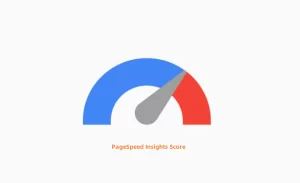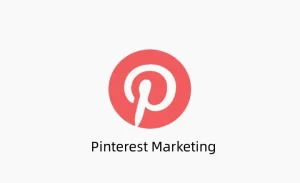In today’s digital landscape, having a strong social media presence is crucial for businesses of all sizes. And when it comes to social media platforms, Facebook remains the undisputed king with nearly 3 billion monthly active users.
So, it’s no surprise that creating a robust Facebook marketing strategy is essential for any business looking to succeed in the online world.

In this blog post, Dolma will walk you through the key tactics and strategies you need to employ to create a winning Facebook marketing strategy.
From setting goals to understanding your audience, publishing engaging content, leveraging Facebook ads, and tracking your results, we’ve got you covered. So, let’s dive in!
Why is Facebook marketing important?
Using Facebook for marketing offers several benefits. Here are five reasons why businesses should consider leveraging Facebook as a marketing channel:
1. Massive Worldwide Audience
With over 2.85 billion monthly active users, Facebook provides businesses with access to a vast global audience. This reach allows companies to increase brand awareness, engage with potential customers, and drive traffic to their websites or physical stores.
2. Cost-Effective Advertising
Businesses of all sizes, including those with tight budgets, can create effective ad campaigns and reach their target audience without breaking the bank.
The flexible pricing options and the ability to set daily or lifetime budgets make it a cost-effective choice for businesses.
3. Precise Targeting Capabilities
Advertisers can define their target audience based on demographics (age, gender, location), interests, behaviors, and even specific criteria like relationship status or job title.
This level of targeting ensures that ads are displayed to the most relevant users, increasing the likelihood of conversions.
4. Easy Ad Testing and Optimization
Advertisers can easily create multiple ad variations to test different images, headlines, ad copy, and calls to action. Through continuous monitoring and analysis of the ad performance metrics, businesses can optimize their campaigns to improve click-through rates, conversions, and return on investment.
5. Remarketing Opportunities
By using the Facebook Pixel, businesses can track website visitors and target them with customized ads on Facebook. This enables businesses to re-engage with users who have already shown interest in their products or services, increasing the chances of conversion and fostering brand loyalty.
In conclusion, By leveraging these advantages, businesses can effectively reach and engage with their target audience, drive conversions, and achieve their marketing objectives.
How to Create a Facebook Marketing Strategy
Learn how to create an effective Facebook marketing strategy to grow your business and reach your target audience.
Expert tips and step-by-step guide included. Let’s explore together!
Step 1: Set Clear Goals for Your Facebook Marketing
Before diving into the world of Facebook marketing, it’s crucial to set clear goals and objectives. Establishing goals will provide a roadmap and help you measure your success.
Whether you want to increase sales, improve brand awareness, or enhance customer engagement, having well-defined goals will steer your strategy in the right direction.
Some common goals for Facebook marketing include:
- Increasing the overall quality of your sales by targeting your audience more efficiently.
- Adding more value to your organization by nurturing customers and providing resources.
- Gaining a better understanding of the industry and staying ahead of your competitors.
- Enhancing your recruitment efforts and reaching top talent faster.
- Achieving smarter growth by reducing churn, limiting spending, and increasing acquisition.
Tools like Sprout Social can help you monitor and analyze your Facebook reporting, providing valuable insights to optimize your strategy.
Step 2: Understand Your Facebook Audience
To create a successful Facebook marketing strategy, you must understand your target audience. Facebook offers a wealth of demographic information that can help you identify who is using the platform and how to tailor your content to resonate with them.
Spend some time analyzing your own Facebook demographics using Facebook Page Insights or tools like Sprout Social. This will give you valuable insights into the age, gender, location, and interests of your audience.
By understanding their preferences, you can deliver the right mix of content that drives engagement and ultimately leads to conversions.
Step 3: Publish Engaging Content on Your Facebook Feed
Facebook offers a variety of post types, including photos, videos, carousels, links, and more. Leveraging these different formats will help you create an interesting and dynamic feed.
Here are some ideas for engaging content:
- Allow followers to message you directly through WhatsApp or Facebook Messenger, making it easier for them to engage with your brand.
- Tag products in your photos, enabling followers to make immediate purchases.
- Support local charity organizations by adding fundraisers to your posts.
- Create humorous content by attaching GIFs to engage your audience.
By diversifying your content and ensuring it aligns with your brand’s identity, you can keep your Facebook feed exciting and encourage active participation from your followers.
Step 4: Post When Your Followers Are Most Active
While organic reach on Facebook can be challenging, understanding when your specific audience is online can significantly impact your engagement levels.
Keeping an eye on your Sprout analytics and Facebook insights will provide valuable information about when your audience is most likely to interact with your content.
Research indicates that the best times to post on Facebook vary depending on your industry and target audience. Experiment with different posting times and use analytics tools to determine the optimal posting schedule for your brand.
Step 5: Schedule Your Facebook Content
Consistency is key to maintaining an active and engaging Facebook presence. However, posting content in real time can be time-consuming and inefficient. That’s where scheduling your content comes in.
Take advantage of Facebook’s page controls to schedule your posts directly from your page. Alternatively, tools like Sprout Social’s ViralPost feature can help you determine the best times to schedule your posts based on audience engagement.
By planning and scheduling your content in advance, you can save time, ensure consistent posting, and maintain an organized social media calendar.
Step 6: Proactively Engage with Your Audience
As a brand, it’s crucial to actively engage with your audience and build a community around your brand. Facebook offers various opportunities for engagement, such as holding industry chats or discussions, responding to comments, and asking your audience to participate in polls or surveys.
By proactively engaging with your followers, you create a sense of community and establish stronger customer relationships. This level of interaction not only increases engagement but also enhances the overall customer experience.
Don’t be afraid to ask for engagement from your audience. Encourage them to react, comment, and share their opinions. By fostering meaningful conversations, you can create a loyal and engaged community on Facebook.
Step 7: Leverage Facebook Messenger for Customer Relationships
Facebook Messenger provides a unique opportunity to build direct relationships with individual customers. Adding a message button to your posts allows users to reach out to your brand directly, opening the door for personalized conversations and improved customer service.
You can assign a social media team member to manage your Messenger inbox or automate responses using chatbots. By setting up automated responses or using chatbots, you can provide immediate assistance, answer frequently asked questions, and even enable users to shop directly through Messenger.
By incorporating Messenger into your Facebook marketing strategy, you can enhance customer satisfaction, build stronger relationships, and streamline your customer support process.
Step 8: Develop a Facebook Ads Strategy
While organic reach on Facebook is valuable, paid advertising is essential to reach a wider audience and achieve specific business objectives. Creating a well-defined Facebook ads strategy will ensure cost-effective and relevant advertising that drives results.
Determine your monthly ad budget and allocate it strategically to maximize reach, generate sales, and increase brand awareness. To make the most of your ad spend, it’s crucial to target the right audience and optimize your ads for relevance.
Consider the following when developing your Facebook ads strategy:
- Build custom audiences based on user behavior, interests, and website visitors.
- Create lookalike audiences to find potential customers who are likely to be interested in your content or products.
- Design your creative assets, such as product photos, branded graphics, or videos, to capture your audience’s attention and drive action.
- Keep your ad content fresh by regularly updating and repurposing your ads to avoid ad fatigue.
Monitoring key metrics, such as click-through rates, impressions, and cost per acquisition, will help you evaluate the performance of your ads and make data-driven optimizations.
Step 9: Track and Analyze Your Results
Tracking and analyzing your Facebook marketing results is essential to measure the success of your strategy and make informed decisions.
By monitoring key metrics and tracking your progress, you can identify what’s working and what needs improvement.
Tools like Sprout Social provide comprehensive analytics to help you track your Facebook performance and gain insights into your audience’s behavior.
By analyzing the data, you can identify trends, optimize your content, and refine your strategy for better results.
Regularly review your metrics, assess your ROI, and make necessary adjustments to ensure your Facebook marketing strategy is aligned with your goals and objectives.
How to measure Facebook’s marketing effectiveness
Measuring the success of your Facebook marketing efforts is crucial to understanding the effectiveness of your strategies and making informed decisions for future campaigns.
Here are five key elements to consider when measuring the success of your Facebook marketing:
- Reach and Engagement: One of the primary metrics to evaluate is the reach of your Facebook posts or ads. It indicates the number of unique users who have seen your content. Additionally, tracking engagement metrics such as likes, comments, and shares can provide insights into how well your content resonates with your audience.
- Conversion Tracking: Set up conversion tracking to measure the actions users take after viewing your Facebook ads. This could include purchases, sign-ups, app installs, or any other desired action. By tracking conversions, you can determine the ROI of your Facebook campaigns and optimize them accordingly.
- Click-Through Rate (CTR): It reflects the effectiveness of your ad’s headline, copy, and creative elements. A high CTR indicates that your ad is compelling and relevant to your target audience.
- Cost per Acquisition (CPA): CPA is the average cost you incur to acquire a new customer or lead through your Facebook campaigns. By calculating the CPA, you can assess the cost-effectiveness of your marketing efforts and compare it to the value generated by each acquired customer.
- Return on Ad Spend (ROAS): It helps determine the profitability of your campaigns and assists in allocating your budget effectively. A higher ROAS indicates that your ads are generating a significant return on your investment.
Regularly monitor and analyze these metrics to gauge the success of your Facebook marketing initiatives and refine your strategies accordingly.
Conclusion
Creating a winning Facebook marketing strategy requires a systematic approach and a deep understanding of your audience.
By setting clear goals, publishing engaging content, leveraging Facebook ads, and actively engaging with your audience, you can build a strong presence on the platform and achieve your business objectives.
Remember to consistently track and analyze your results to make data-driven optimizations and ensure your strategy remains effective.
With the right tactics and a well-executed plan, your Facebook marketing strategy can drive engagement, increase brand awareness, and ultimately contribute to your business’s success.
So, get started today and unlock the full potential of Facebook marketing for your business!
Posts that may interest you:


